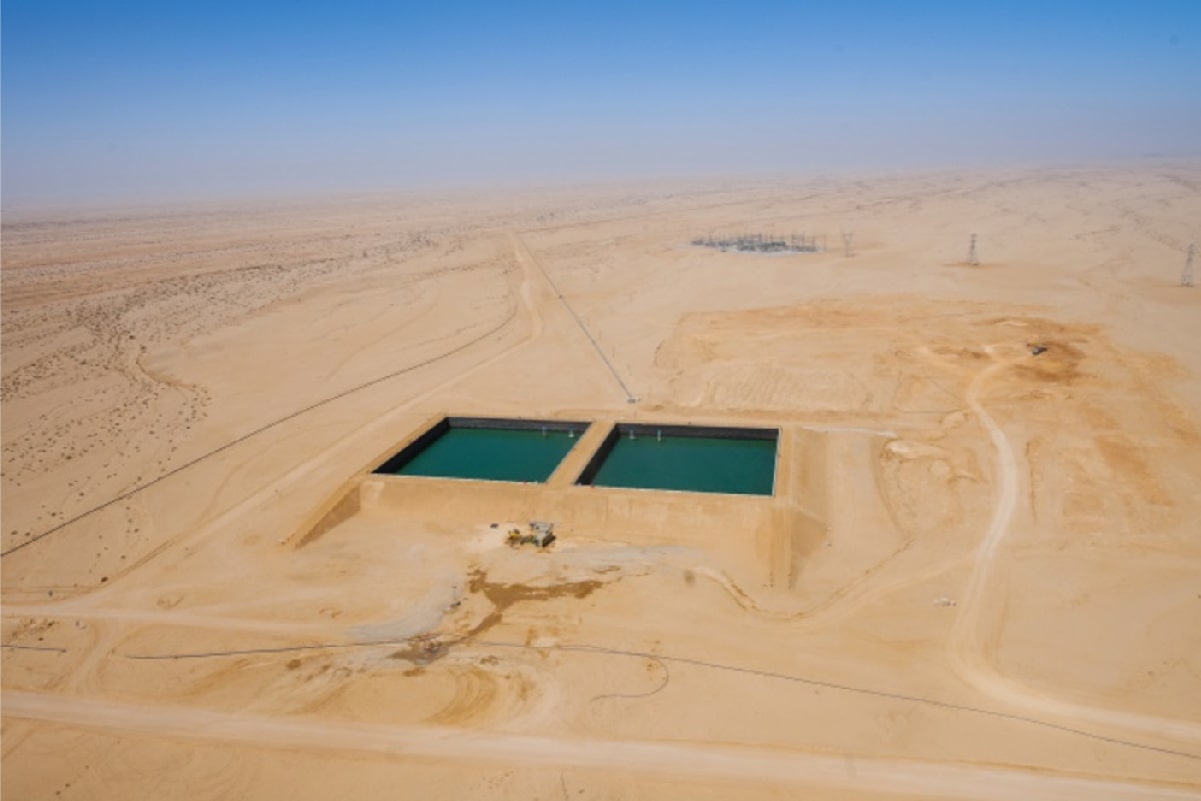Trekkopje Desert Reservoirs Namibia
Constructed in 2009

Desalinated sea water is pumped over 50 km from the Atlantic seaboard to the mine situated in west-central Namibia.
Constructed in 2009, Trekkopje Uranium Mine’s reservoirs have proved the benefits of Reinforced Earth® technology. Successfully withstanding the Namibia. Fast-track construction was a key consideration for going the Reinforced Earth route, plus the need to counter aggressive corrosion and elevated temperatures.
The design brief called for the building of six adjacent and interconnected reinforced concrete water-retaining structures complete with concrete roofs. Each reservoir was to have a capacity of 9Ml, making the total capacity 54Ml. The project needed to be completed in eight months.
One of the tenderers, Target Projects offered an alternative solution. This consisted of two 27Ml units composed of Reinforced Earth walls with lined vertical inside faces and a 1V:2H outer embankment slope. The sidewalls and floors of the containment area would be covered with an impermeable geosynthetic liner.
The alternative concept also provided for a rigid concrete roof. The roof requirement was subsequently omitted by the client. The alternative was accepted for the following reasons.
- Shorter completion time
- The simpler process to dismantle and rehabilitate at the end of the mines life
- Vertical sides to accommodate a rigid roof structure (although not subsequently adopted)
- Cost advantages
- Flexibility and suitability for poor founding conditions
Reservoir geometry
The original water depth of 6,5 m was retained giving a reservoir size of 64.5 m x 64.5 m x 6.5 m deep. The overall depth of 7.5 m (0.5 m freeboard and 0.5 m embedment) was the maximum height.
Constituent materials
The facing was non-reinforced concrete, the joints were sealed.
A synthetic strip (GeoStrap) was connected to the panels by way of synthetic sleeves (GeoMega) cast into the panels providing a fully synthetic connection
Locally available sands were used for both the common and RE backfill
Design:
Internal and overall stability, drainage, and hydraulic considerations were addressed.
Follow up:
After the initial pilot stage ended in 2013 full-scale production at the mine was mothballed pending optimal economic conditions. Reservoir water is being used for drinking water, mine maintenance, and leach pad trials. No leaking has been detected from the reservoirs after seven years of operation.
Since the reservoirs are not covered the loss of water is solely due to evaporation which is approximately 2m per annum at the mine. The lining appears to be in good condition and no maintenance or replacement lining is envisaged in the foreseeable future.
